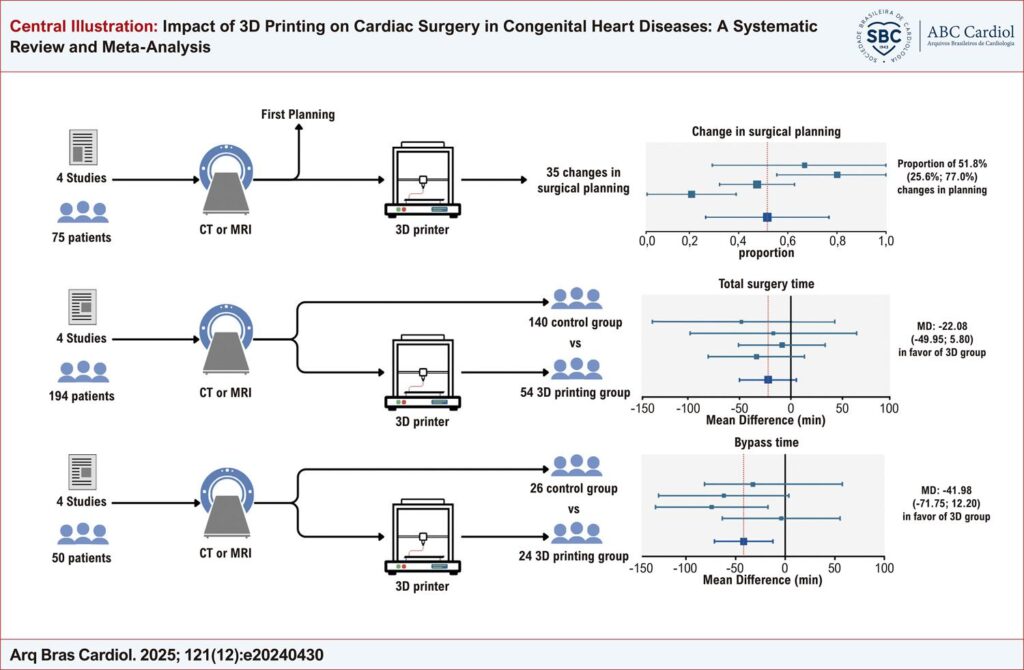Arq. Bras. Cardiol. 2024; 121(12): e20240430
Impact of 3D Printing on Cardiac Surgery in Congenital Heart Diseases: A Systematic Review and Meta-Analysis
This Original Article is referred by the Short Editorial "The Role of 3D Printing in Cardiac Surgery for Congenital Heart Diseases".
Abstract
Background
Congenital heart disease (CHD) poses significant challenges in surgical management due to the complexity of cardiac anatomy. Three-dimensional (3D) printing has emerged as a promising tool in preoperative planning, intraoperative guidance, and medical education for CHD surgeries.
Objectives
We aimed to systematically review the literature on the utilization and benefits of 3D printing technology in CHD surgical interventions.
Methods
A systematic search was conducted across PubMed and EMBASE for studies published up to February of 2024. We included controlled and uncontrolled studies investigating the surgical role of 3D printing in CHD patients. We conducted a single-arm meta-analysis estimating the proportion of change in treatment planning due to the use of 3D printed-models. Moreover, studies that compared 3D printing to conventional care were included into the meta-analysis. A p-value < 0.05 was considered statistically significant.
Results
A total of 21 studies met the inclusion criteria, comprising 444 patients undergoing CHD surgeries with 3D printing assistance. Preoperative planning aided by 3D models led to changing surgical decisions in 35 of 75 cases (51.8%; 95% CI 26.6-77.0%, I2=80.68%, p=0.001) and reduced total operative time in 22.25 minutes in favor of the 3D printing group (95%CI 49.95; 5.80 min, I2=0%, p=0.817) but without statistical significance. Albeit in a smaller sample, other endpoints (mechanical ventilation and ICU time) demonstrated some benefit from the technology but without statistical significance.
Conclusions
By providing personalized anatomical models, 3D printing may facilitate surgical planning and execution. More studies are needed to investigate the effects of 3D printing on reducing intervention, hospitalization, and mechanical ventilation times.
601

